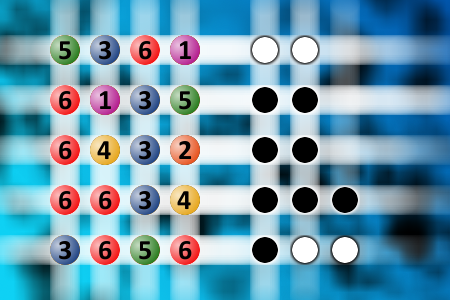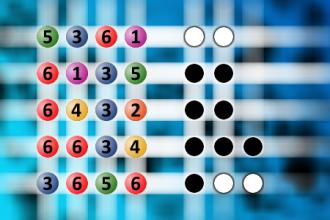Find the right combination
The computer chose a secret code (sequence of 4 digits from 1 to 6). Your goal is to find that code. Black circles indicate the number of hits on the right spot. White circles indicate the number of hits on the wrong spot.
Duct Tape & Onwards
An old man is sitting on his porch when he sees a young boy walking down the street dragging something behind him. He calls out to the boy, "Hey son, what you got there?" to which the boy replies, "It's duct tape, I'm gonna go catch me some ducks." The old man laughs and he calls out, "You fool, you can't catch ducks with duct tape!" The little boy laughs and continues on his way, returning a few short hours later, and behind him, he is dragging 8 ducks, all wrapped up in the duct tape. The old man can't believe his eyes.
The next day, the old man is sitting on his porch again and along comes the little boy dragging something behind him. When the old man asks what he's got this time, the boy replies, "It's a spool of chicken wire, I'm going to catch some chickens in it." Well the old man begins to laugh quite hard, telling the boy, "You fool, you can't catch chickens with chicken wire." The boy laughs himself, and says back, "That's what you said about the duct tape," and he continues on his way, with the old man laughing like crazy. A few hours later the old man is surprised to see the boy coming back, and even more shocked to see that behind him he is dragging 10 chickens, all tangled up in the chicken wire, he can't believe his eyes again.
The next day, the old man is sitting there wondering what the little boy will be up to next, and sure enough he sees him coming down the street with something in his hand. He calls out to the boy, "Hey son, what you go there today?
" The boy responds, "It's a pussy willow." The man then replies, "Hang on son, I'll get my hat!"

